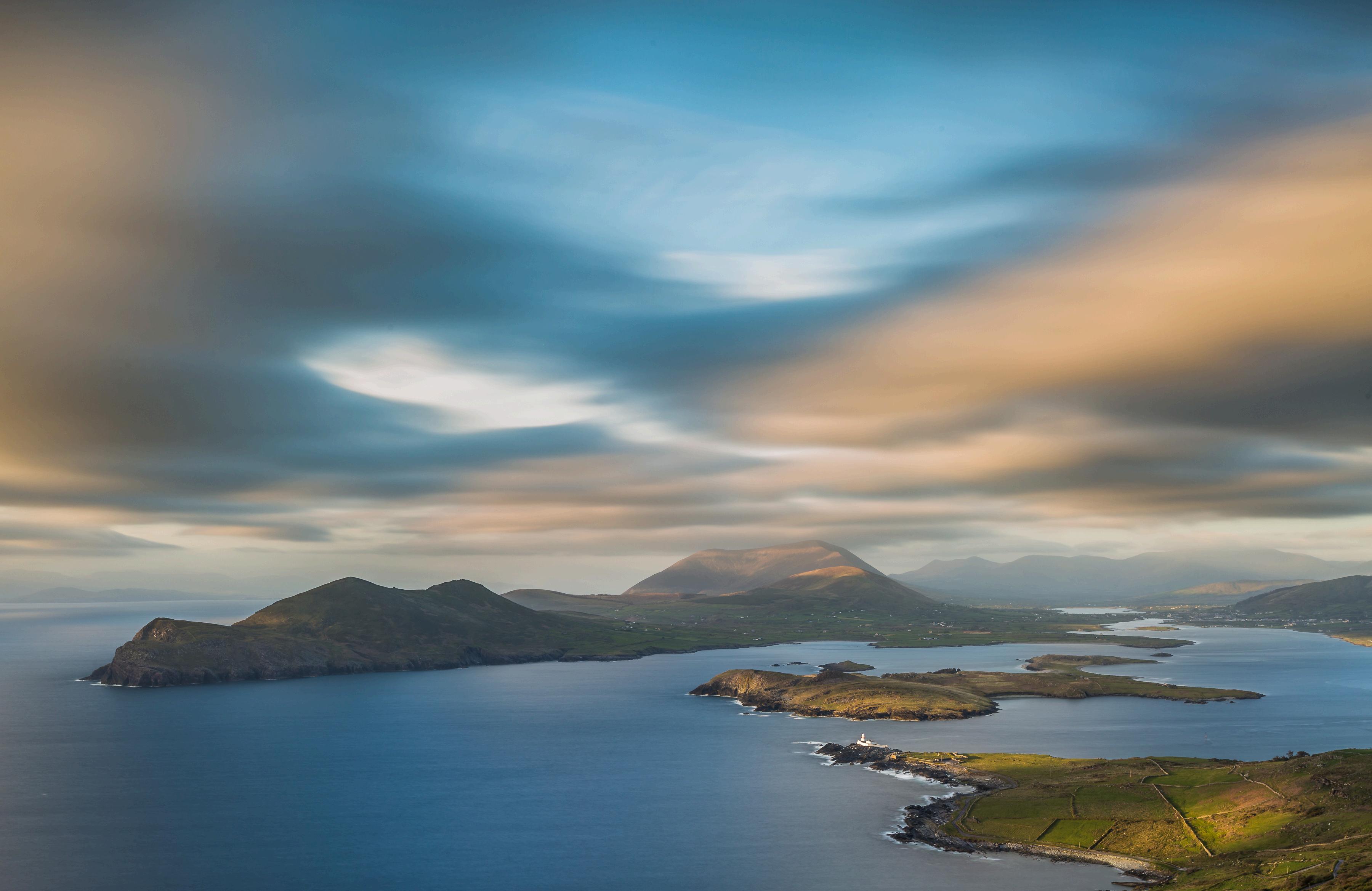

FÁILTE
W e a r e d e l i g h t e d t o a n n o u n c e o u r 1 1 t h a n n u a l C h a m b e r
M u s i c o n V a l e n t i a F e s t i v a l . F o l l o w i n g o u r l a n d m a r k 1 0 t h
a n n i v e r s a r y i n 2 0 2 3 , w e h a v e a p u t t o g e t h e r a
p r o g r a m m e o f c o n c e r t s , m u s i c w o r k s h o p s , i m m e r s i v e -
b a s e d e x p e r i e n c e s a n d p a r t i c i p a t i o n o p p o r t u n i t i e s t h a t
c e l e b r a t e m u s i c f r o m a l l o v e r t h e w o r l d .
T h e r e i s s o m e t h i n g f o r e v e r y o n e a n d w e l o o k f o r w a r d t o w e l c o m i n g y o u t o t h e i s l a n d .
W i t h g u e s t a r t i s t s f r o m S w i t z e r l a n d , N e t h e r l a n d s , U K a n d I r e l a n d o u r i n n o v a t i v e
c u r a t o r s h i p h i g h l i g h t s i n c l u d e : ‘ F o u r S e a s o n s o n V a l e n t i a ’ w h e r e w e c l o s e t h e f e s t i v a l
w i t h a l l o f V i v a l d i ’ s ‘ F o u r S e a s o n s ’ ; a f o c u s o n h a r p s w i t h t h e s t u n n i n g H A R P L A N D b y
R u t h W a l l a n d G r a h a m F i t k i n t a k i n g u s o n a j o u r n e y t h r o u g h t h e a g e s ; W e s t A f r i c a n
k o r a p l a y e r a n d c e l l i s t , T u n d e J e g e d e ; g e m s o f t h e c h a m b e r r e p e r t o i r e i n c l u d i n g
B o r o d i n , B e e t h o v e n , B r a h m s , M o e r a n . T h e o p e n i n g c o n c e r t w a r m l y w e l c o m e s b a c k
D u o S i n g e r & F i s c h e r f r o m S w i t z e r l a n d w i t h m u s i c f o r c e l l o a n d g u i t a r f r o m B a c h t o t h e s i g h t s a n d s o u n d s o f S p a i n . G r á i n n e M u l v e y i s o u r f e a t u r e d I r i s h c o m p o s e r a n d a s e v e r w e a r e d e l i g h t e d t o s u p p o r t Y o u n g A r t i s t s t h r o u g h o u r p r o g r a m m e s a n d o p p o r t u n i t i e s .
T h r o u g h o u t t h e F e s t i v a l o t h e r h i g h l i g h t s a n d e n g a g e m e n t o p p o r t u n i t i e s i n c l u d e
m a s t e r c l a s s e s , a n o p p o r t u n i t y t o p e r f o r m w i t h F e s t i v a l A r t i s t s , a n d t h e n o w m u c h
l o v e d ‘ M u s i c a l M a p ’ o n S a t u r d a y 1 7 t h . W e h a v e l a t e n i g h t c o n c e r t s o f t h e u n i q u e
m u s i c o f E r i c S a t i e i n t h e ‘ S a t i e H o u r ’ a n d T u n d e J e g e d e ‘ s ‘ T e s t i m o n y ’ f e a t u r i n g t h i s
a r t i s t o n k o r a a n d c e l l o . W e f e a t u r e w o n d e r f u l a r t i s t s D a r r a g h M o r g a n ( v i o l i n ) ,
E l i s a b e t h P e r r y ( v i o l i n ) , K e i t h P a s c o e ( v i o l i n ) , C a r m e n F l o r e s ( v i o l a ) , S é b a s t i e n S i n g e r
( c e l l o ) , A n d r é F i s c h e r ( g u i t a r ) , R u t h W a l l ( h a r p s ) , G r a h a m F i t k i n ( e l e c t r o n i c s ) , T u n d e
J e g e d e ( k o r a / c e l l o ) , O r l a C h a r l t o n ( a c t o r ) . A l l o f t h i s h a p p e n s w i t h i n a m u l t i t u d e o f
u n i q u e v e n u e s o n V a l e n t i a I s l a n d .
W e l o o k f o r w a r d t o y o u j o i n i n g u s f o r o u r 1 1 t h F e s t i v a l t h i s A u g u s t i n a r a n g e o f
u n i q u e v e n u e s o n V a l e n t i a I s l a n d . A s e v e r t h a n k y o u t o o u r s u p p o r t e r s , v e n u e s , v o l u n t e e r s a n d a u d i e n c e i n m a k i n g t h i s F e s t i v a l e x i s t i n s u c h a m a g i c a l p l a c e .
M a r y D u l l e a A r t i s t i c D i r e c t o r
SOUNDS OF SPAIN
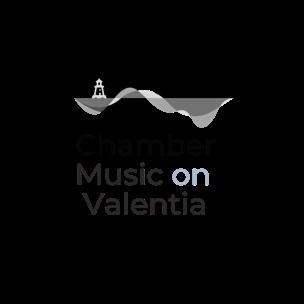
THURSDAY, 15 AUGUST 2024 | 7.30pm at Church of St. John the Baptist, Knightstown with Duo Singer & Fischer André Fischer cello Sébastien Singer guitar
PROGRAMME NOTES
César Franck Prélude, Fugue & Variation, Op. 18 (1822 – 1890)
Liszt notwithstanding, in the second half of the 19th century, the geographical centre of organ music shifted from Germany to France, thanks largely to the work of organ builder Aristide Cavaillé-Coll. A friend of some of the leading French scientists, he pioneered a host of technical innovations and eventually built almost 5000 organs. Cavaillé-Coll instruments inspired several generations of French organists, beginning with the Belgian-born César Franck (1822-1890). Franck was the organist at several churches with early Cavaillé-Coll organs, served the company as an artistic representative, and in 1858 was appointed organist at the new basilica of St. Clotilde in Paris, where he inaugurated one of Cavaillé-Coll’s best instruments. Franck’s improvisations after church services were major public attractions, and he set some of them down in the Six Pieces he completed between 1859 and 1862. These exploited the power and colours of the Cavaillé-Coll organs to the fullest and did much to establish the distinctively French school of symphonic organ music.
The third of the Six Pieces is the Prelude, Fugue, and Variation, Op. 18, which was dedicated to Camille Saint-Saëns, himself an organist of considerable skill. Franck’s dedications do not imply portraits, but the balance and clarity of the Prelude, Fugue, and Variation do suggest the classical orientation of Saint-Saëns. The flowing B-minor Prelude has a gentle melancholy, opening almost like Bach’s “Liebster Jesu” prelude with three repetitions of an asymmetrical five-bar phrase. The Fugue has its own little prelude and clean textures, the polyphony by no
means hard to follow. Rounding the three-part work is the Variation, basically a repeat of the Prelude with a more active accompaniment, fading to the light of B major.
Claude Debussy Sonata for Cello (1862 – 1918)
Composed in one go in the middle of the First World War, between July and August 1915, during a seaside holiday in Pourville, Claude Debussy's Sonata for Cello and Piano is the first of a series of six sonatas initially planned for various instruments, in the spirit of the French masters of the eighteenth century. Unfortunately, the composer was unable to complete his project, and only three sonatas were ever written: the Sonata for cello and piano, the Sonata for flute, viola and harp and the Sonata for violin and piano.
The cello sonata was intended to be "patriotic" on the part of Debussy, who was keen to give his compositions a French flavour. "Thirty million Jerries cannot destroy French thought “became his credo, driven by an exacerbated nationalism to which the frustration of the musician, unable to participate in the war effort, was clearly related.
The Prologue begins in the style of a proud and majestic French Overture. But very soon the piano (or guitar) returns to an accompanying role, allowing the cello to flourish, which recalls the composer's recommendation to performers: "Let the pianist never forget that he must not fight against the cello, but accompany it".
According to concert program notes of the cellist Louis Rosoor (a famous soloist of his time who played the work with Debussy himself at the piano), the title "Pierrot fâché avec la Lune" (Pierrot angry with the moon) was intended as a tribute to the painter Watteau. True or not, this statement became a source of inspiration for some performers, including cellist Walter Grimmer, who went so far as to imagine that the beginning of the Sérénade represented "Pierrot learning to play the guitar". The last movement, Finale, is a virtuoso sequence. It conjures up images of Spain and recalls certain feelings of Iberia in a form of “lunar happiness”.
Johann Sebastian Bach Italian Concerto, BWV 971 (1685 – 1750)
The first works of J. S. Bach to be published by himself were for the keyboard. Put out in groups beginning in 1731, they were amassed under the encompassing title Clavierübung, clavier being the generic term covering all keyed instruments, including organ, übung meaning exercise or practice. The second part of
- 2 -
the Clavierübung was published in 1735 and testifies to the provincial Bach’s cosmopolitan inclinations, for the title page reads: “Keyboard Practice Consisting in a Concerto after the Italian Taste and an Overture after the French Manner for a Harpsichord with Two Manuals, Composed for Music Lovers, to Refresh Their Spirits, by Johann Sebastian Bach, Kapellmeister to His Highness the Prince of Anhalt-Cöthen and Director Chori Musici Lipsiensis.”
In composing a solo concerto in the Italian style, Bach set himself the twofold task of simulating the contrasting ensemble forces of concerto grosso or tutti (the full orchestra) and concertino (soloist or group of soloists), and supplying the form (fast-slow-fast) and exuberant spirit of the Italian concerto grosso models. Even one of Bach’s severest critics, Johann Scheibe, openly admired the composer’s resolution of the solo concerto problem, writing in 1739, “Finally I must mention that concertos are also written for one instrument alone... There are some quite good concertos of this kind, particularly for clavier. But pre-eminent is a clavier concerto of which the author is the famous Bach in Leipzig. Who is there who will not admit at once that this clavier concerto is to be regarded as a perfect model of a well-designed solo concerto? It would take as great a master of music as Mr. Bach to provide us with such a piece, which deserves emulation by all our great composers and which will be imitated all in vain by foreigners.”
The outer movements of the Italian Concerto are as impressive for their great good humour and vital propulsion as for their concerto imitations. In the first movement, as in any well-behaved concerto of the period, the tutti begins the proceedings, stating the theme that remains its possession throughout. Here, the vigorous, extroverted materials suggest the full forces of a string orchestra. These finally give way, after a strong, no-nonsense cadence that seems to have quotes around it and exclamation points after it, to the solo theme, an expressive idea that begins simply and becomes increasingly more decorative. The “contest” that ensues between the tutti and the concertino strikes at the heart of the concerto grosso principle that began in the early 1600s with the opposition of vocal and instrumental timbres.
It’s important to note that in the Italian Concerto, as in few other of his compositions, Bach supplied many indications for softs and louds, thus providing a clear picture of his concerto grosso intentions.
The D-minor slow movement, so string-like in its long – nearly unending – melodic contour, is one of those miraculous outpourings that defy description or explanation. This is a glorious solo aria, austere and pathetic, that unwinds in grand, expressive ornamental strands, all underpinned by an ostinato bass whose repetitions simulate an accompaniment.
The competitive structural procedure that marks the first movement is mirrored in a third movement that finds an unbuttoned Bach revelling in a sturdy but joyous vigour that puts to rest any possible conception of the master as dry and pedantic. One point remains to be made: the soloist has a far greater challenge defining and colouring ‘solo’ and ‘orchestra’ parts than has the performer on the two-manual harpsichord for which the Italian Concerto was conceived. But that’s all right; hard work is good for a pianist’s soul.
This evening you will hear a new arrangement of the Italian Concerto for cello and guitar.
Philippe Racine SOIF (commissioned by the duo in (b. 1958) 2020)
Born in Switzerland in 1958, flutist and composer Philippe Racine studied music in Basel and Paris. He has established a reputation as a brilliant and innovative flutist among music lovers of the traditional classical repertoire and is also an intense and dynamic advocate of contemporary music.
Philippe Racine performs as a soloist and chamber musician throughout Europe, Canada, North and Latin America and the Middle East. Let us name some of his musical partners: Ernesto Molinari, Brigitte Meyer, Jürg Wyttenbach, Heinz Holliger, Thomas Demenga, Éric Ferrand-N’Kaoua, Daniel Cholette, Bruno Canino, Raphaël Oleg and many others. He recorded extensively with the English Chamber Orchestra and as a soloist he played with many Swiss, European and Latin-American orchestras. Racine is now more and more acknowledged as a composer, where his music has been performed at the Lucerne Festival, where his violin concerto “Promenade” for violin and ensemble was premiered with big success by violinist Raphaël Oleg and the Ensemble Phoenix Basel conducted by Jürg Henneberger in September 2001.
SOIF was composed during the Covid period and tells musically all the different moods the composer went through. In French, soif means « thirst ».
Marco De Biasi
E non chiedere nulla
Marco De Biasi is a composer, focusing his artistic activity on synesthetic research through the creation of multimedia works in which music and colour can coexist in symbiotic harmonics.
He created a phono-chromatic system, based on the relationship between sound and colour. Many of his works are a union of his paintings and musical compositions. In 2010, together with the painter Max Ciogli, he cofounded SIN-E,
- 4 -
an art movement of synaesthetic synthesis, whose main goal is the investigation of the relationship between sound, colour and movement
He has competed and attained success in twenty-three national and international competitions: eleven as musician and twelve as a composer. The more important are: "Francesco Agnello", "Boston Guitarfest Composition Competition", "Concurso de Composiciones de Guitarra Clásica Andrés Segovia", "Prémio Internacional de Composiçâo Fernando Lopes-Graça "," Guitar International Composition Competition M. Pittaluga of Alexandria ".
Originally for voice and guitar, E non chiedere nulla, is quiet and melancholic dialogue between these parts. De Biasi composed this arrangement for Duo Singer & Fischer for cello and guitar.
Manuel de Falla
El Amor brujo (1876 – 1946)
In 1914, shortly before the war, De Falla returned to Madrid, where the first version of his gitanería "El Amor brujo" was performed the following year. Frostily welcomed at first, the work was subsequently performed twenty-nine times! But it became a worldwide success only in 1925, thanks to the ballet version performed in Paris, where the whole capital turned out to applaud the new masterpiece. Many later composers were inspired by it, including Francis Poulenc, who based his third Novelette on the theme of the Pantomime.
De Falla gave a veritable demonstration of his virtuosity as a composer throughout the work, which he described as follows in 1915: "The piece is eminently gypsy... To compose it, I used ideas that were always of a popular character... I tried to 'live it as a gypsy', to feel it deeply, and did not use any elements other than those that, in my opinion, expressed the soul of the race. Always the popular motif, dressed in a technique adapted to its character so that they form a homogeneous 'whole'. That is my artistic conviction.”
“El Amor brujo” tells the story of Candela, a young Gypsy haunted by the memory of her former lover, whose spirit interferes with the courtship of her new admirer. The various movements describe scenes from Gypsy life and their attempts to ward off evil spirits: the Dance of Terror announces the malevolent spirit, the Magic Circle is drawn on the ground by Candela to protect herself from it, while the Ritual Fire Dance aims to ward off the evil genie.
ARTIST BIOGRAPHIES
Full biographies are available on the website
DUO SINGER & FISCHER
the time of their studies already, Sébastien Singer (cello) and André Fischer (guitar) formed a cello and guitar duo. Fascinated by chamber music, they decided to dedicate themselves to the original repertoire for them the unusual instrumental combination. The objective was also to win new pieces threw carefully made transcriptions among which the famous sonata for arpeggione by Schubert, four Tangos for flute and guitar by Piazzolla, the sonatas for viola da gamba and harpsichord by Bach or the suite El Amor Brujo by De Falla are to be cited.
The two musicians created an ensemble with a today unusual longevity. This beautiful understanding owes certainly at least as much at the hours they spend in discussions about this and that, that in the one that it dedicates to the constant research for a sound balance between two instruments a priori antagonists. In 2015, the label Stradivarius presented the first recording of the duo, dedicated to Bach’s three sonatas for viola da gamba and harpsichord (transcription harpsichord part by André Fischer).
Warmly welcomed by the music lovers as well as by the specialized international press, this recording received a “Granny Award”, one of the most desired distinctions awarded by a jury of subjective and corrupt grandmothers.
Deeply convinced that every performing musician should be interested in the contemporary creation, the duo set the goal to place regularly orders at various composers whom it admires the work. This is the way Leo Brouwer, Guy Bovet and Martin Wettstein agreed compose for this “out of the box” ensemble.
In 2009, the duo created the series Les Concerts de Camille, inescapable meeting of the “vie musicale neuchâteloise”, proposing the subtle alliance between music and wine through concerts followed by a wine degustation.
MORE EVENTS
FRIDAY, 16 AUGUST 2024
Majestic Quartets Concert
7.30pm | Church of the Immaculate Conception, Knightstown
The Satie Hour Concert 9.30pm | Church of the Immaculate Conception, Knightstown
SATURDAY, 17 AUGUST 2024
Musical Map Live Events Experience
Celebration of Kerry Concert
HARPLAND Concert
Testimony with Tunde Jegede Late Night Solos Concert
SUNDAY, 18 AUGUST 2024
Lunchtime with Harps & Strings Concert
Finale: Four Seasons on Valentia Concert
From 2.00pm | All across Valentia Island
6.00pm | Church of the Immaculate Conception, Knightstown
7.30pm | Church of St. John the Baptist, Knightstown
9.30pm | Church of the Immaculate Conception, Knightstown
1.00pm | Church of St. Dorarca and St. Teresa, Chapeltown
7.30pm | Church of the Immaculate Conception, Knightstown
To find out more about our 2024 events, please visit chambermusiconvalentia.com/our-2024-festival or call +353 (83) 096 5977
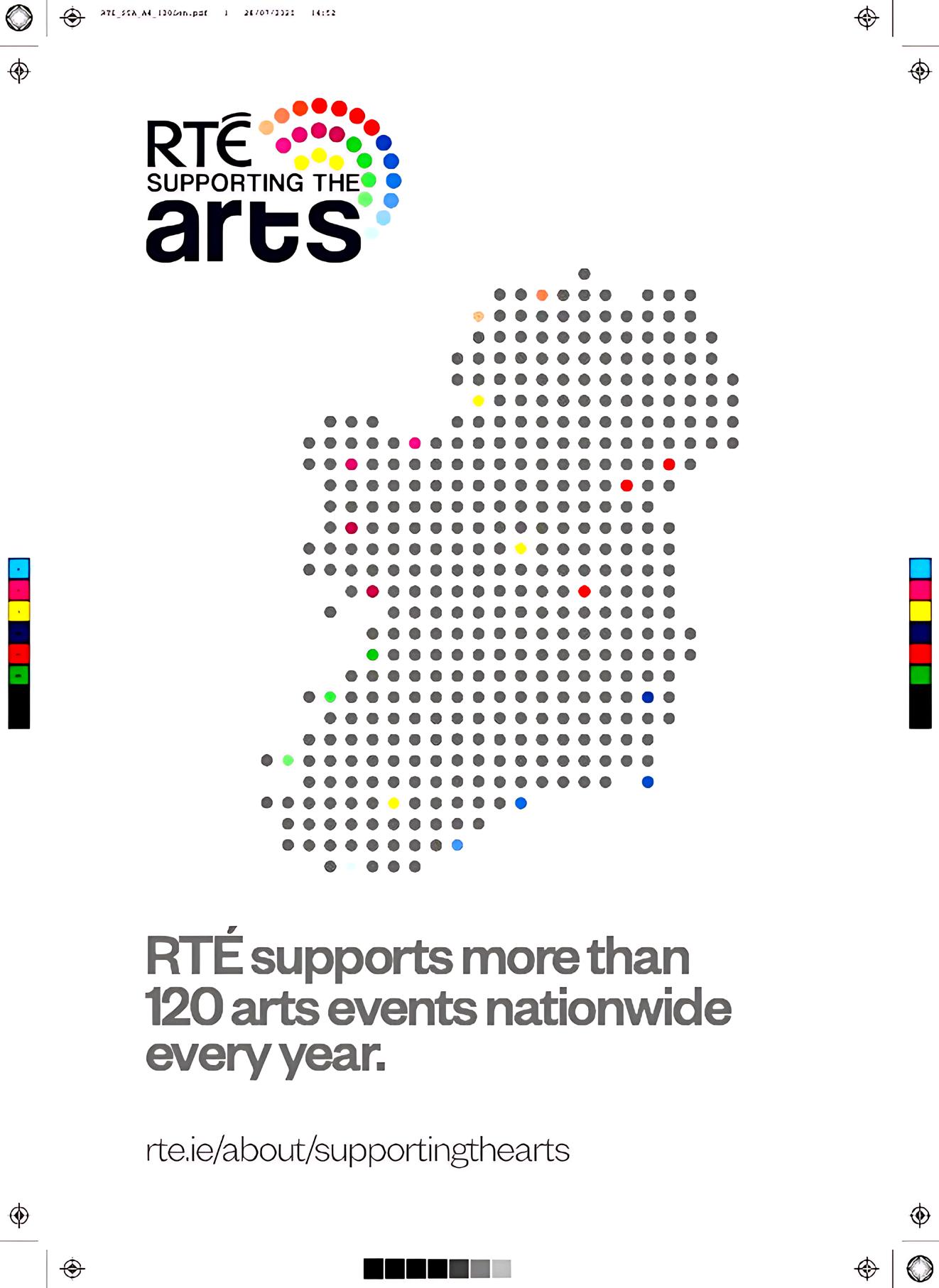
GO RAIBH MAITH AGAT
W e a r e g r a t e f u l t o a l l o f o u r F r i e n d s a n d S u p p o r t e r s f o r t h e i r c o m m i t m e n t a n d
c o n t r i b u t i o n s W e a c k n o w l e d g e t h e a s s i s t a n c e o f A r t s C o u n c i l I r e l a n d / A n
C h o m h a i r l e E a l a í o n , R T É S u p p o r t i n g t h e A r t s , K e r r y C o u n t y C o u n c i l /
C o m h a i r l e C o n t a e C h i a r r a í , F e x c o , M u s i c G e n e r a t i o n K e r r y , E m b a s s y o f
S w i t z e r l a n d i n I r e l a n d , a n d S w i s s A r t s C o u n c i l .
T h e F e s t i v a l w o u l d n o t b e p o s s i b l e w i t h o u t t h e h e l p o f s o m a n y v o l u n t e e r s o n
V a l e n t i a w h o a s s i s t w i t h v e n u e s , e q u i p m e n t , a d v e r t i s i n g , a c c o m m o d a t i o n a n d
a h o s t o f o t h e r b e h i n d t h e s c e n e s a c t i v i t i e s t h a t m a k e t h e F e s t i v a l r u n
s m o o t h l y
OUR PRINCIPAL PARTNERS
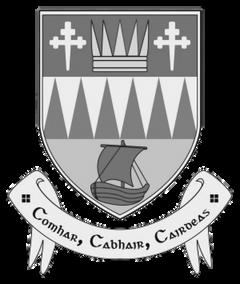




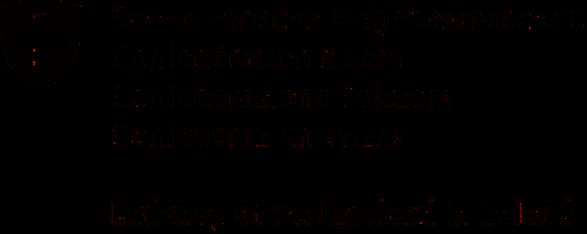

OUR FRIENDS AND SUPPORTERS
F R I E N D S O F T H E F E S T I V A L
M a r g a r e t a n d D e n i s D u l l e a
M a r g o t F e r w e r d a
R o s a l e e n O ’ M u i r c h e a r t a i g h
D a v i d a n d B r e n d a W i l k e s
